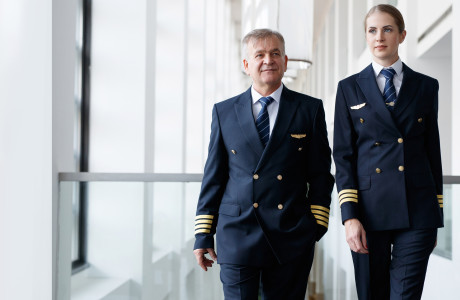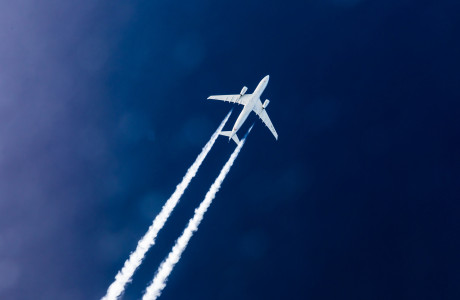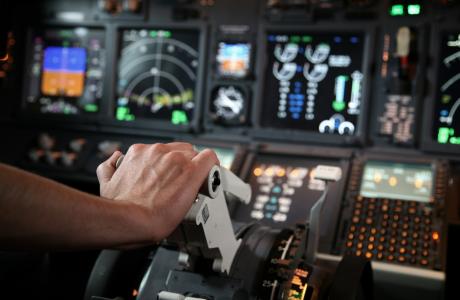
Inside the Aircraft Cockpit: Information & Insights
The aircraft cockpit is the central area for controlling an aircraft. While the flight deck used to be accessible to passengers and especially children, it has been strictly closed off since the beginning of the millennium. In the meantime, only the pilots and, in exceptional cases such as some standby flights, airline employees are allowed to fly in the cockpit. Accordingly, the exact procedures in the cockpit during a flight are no longer easy for laypersons to understand. Technological progress has also brought about increasing changes. But what instruments are there in the aircraft cockpit? What safety measures are taken? And which processes are automated in the aircraft cockpit?
Contents
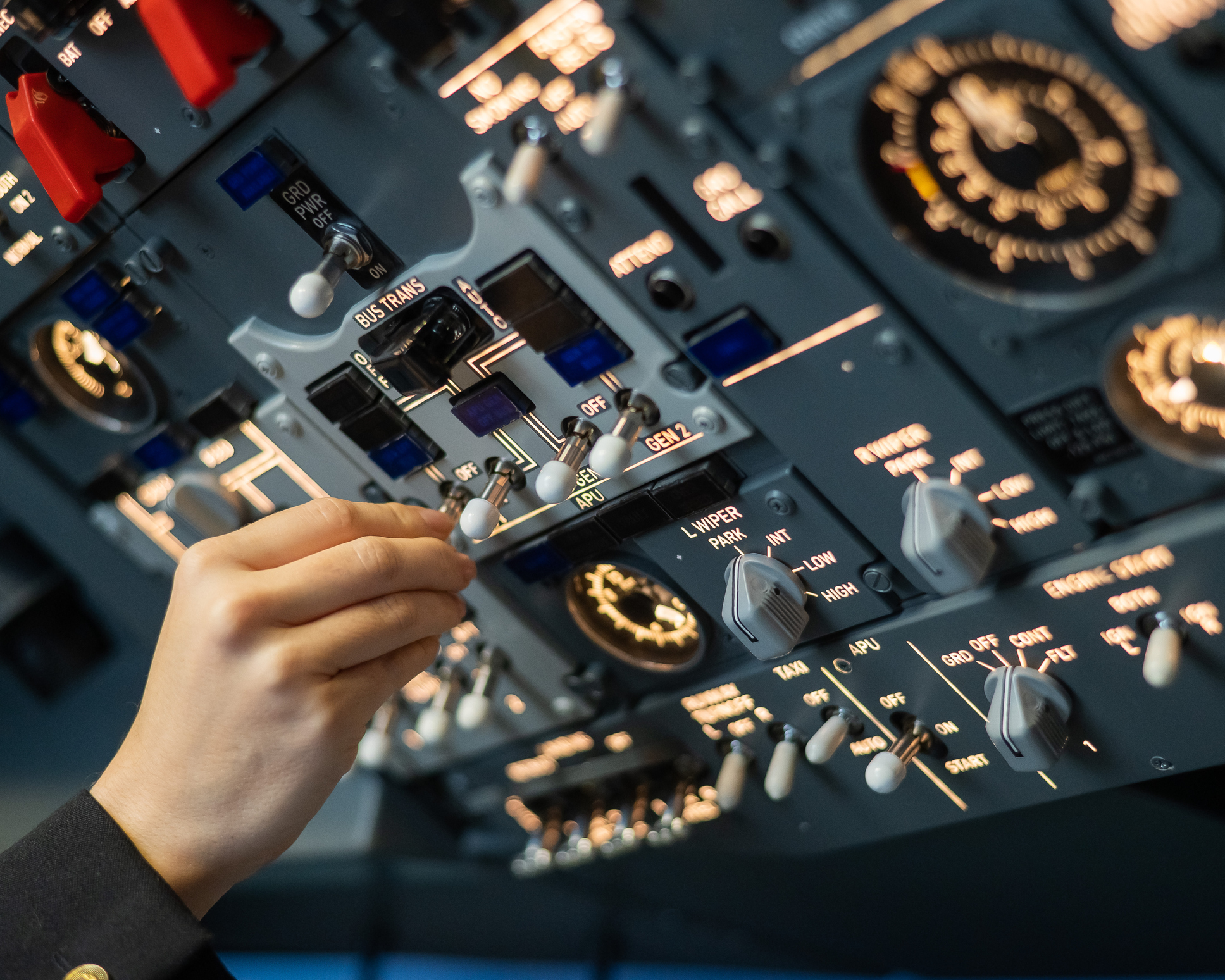
What Is inside the Aircraft Cockpit?
Especially in older pictures, an aircraft cockpit is virtually overcrowded with switches, displays and gauges. Depending on the type of aircraft, there can be almost a thousand controls. In modern passenger aircraft, however, the number is only about three hundred, and all instruments exist once for the pilot and once for the co-pilot and are therefore always duplicated. It is therefore hardly possible to provide an explanation for each of the aircraft cockpit instruments, and also because of the differences between the many types of aircraft. However, the different elements can be divided into certain groups:
1. Gauges and Displays in the Aircraft Cockpit
Similar to a car, the cockpit in an aircraft has, for example, a rev counter and fuel level indicators. In addition, the altimeter and the artificial horizon are particularly central elements. The latter helps the crew to keep the aircraft level even in difficult visibility conditions. Furthermore, weather and precipitation indicators are of great importance for the crew in the cockpit of the aircraft, in order to be able to prevent turbulence on an airplane. Various speed indicators such as the variometer, which measures the rate of climb and descent of the aircraft, are also available there.
The more modern the aircraft, the more likely it is that much of this data will no longer be displayed by individual cockpit instruments in the aircraft, but on screens depending on the situation. These so-called Electronic Flight Instrument Systems (EFIS) provide greater clarity. Digitalisation in the cockpit, so to speak.
2. Control Elements in the Aircraft Cockpit
Of course, the instruments for controlling the aircraft are also located in the aircraft cockpit. This includes thrust levers, steering, brakes, steering options for ground control and levers to extend the landing gear. There are also rudders to turn the aircraft around its longitudinal, lateral and vertical axes.
Whereas in the past the controls were basically mechanical, using cables and hydraulic systems, most aircraft have been equipped with electronics for some time now. By means of such fly-by-wire systems, the control inputs are transmitted to the aircraft by signal.
3. Radio and Navigation in the Aircraft Cockpit
Furthermore, there are instruments in the cockpit of the aircraft for communication with air traffic control and other aircraft. Some of the systems communicate independently to ensure the constant availability of all relevant data. Aids to navigation, such as radar displays, can also be viewed by the crew from here.
4. Lighting in the Aircraft Cockpitt
Lighting also plays an important role. The aircraft cockpit must be illuminated from the inside in such a way that all displays can be read easily at all times and in all lighting conditions. Here, too, the EFIS can help.
Aircraft Cockpit Security
In recent years and decades, cockpit security has steadily increased. In the meantime, there are several precautions at once:
Armoured door: Thanks to bulletproof armour, the door in an aircraft cockpit prevents unauthorised access.
Security code: To enter the cockpit, a security code must be entered, by means of which a person legitimises himself before he can open the door.
Camera surveillance: The area in front of the flight deck is monitored by camera and can thus be seen from the cockpit.
Opening from inside: Even if the security code is entered correctly, clearance to open the door must be given from within the aircraft cockpit. Only after thirty seconds without a reaction does the door open automatically. In this way, it is possible to react to unconsciousness of the pilots in an emergency.
Four-eyes principle: The four-eyes principle is by no means applied everywhere. However, there are increasing efforts to ensure that at no time is one person alone in the aircraft cockpit.
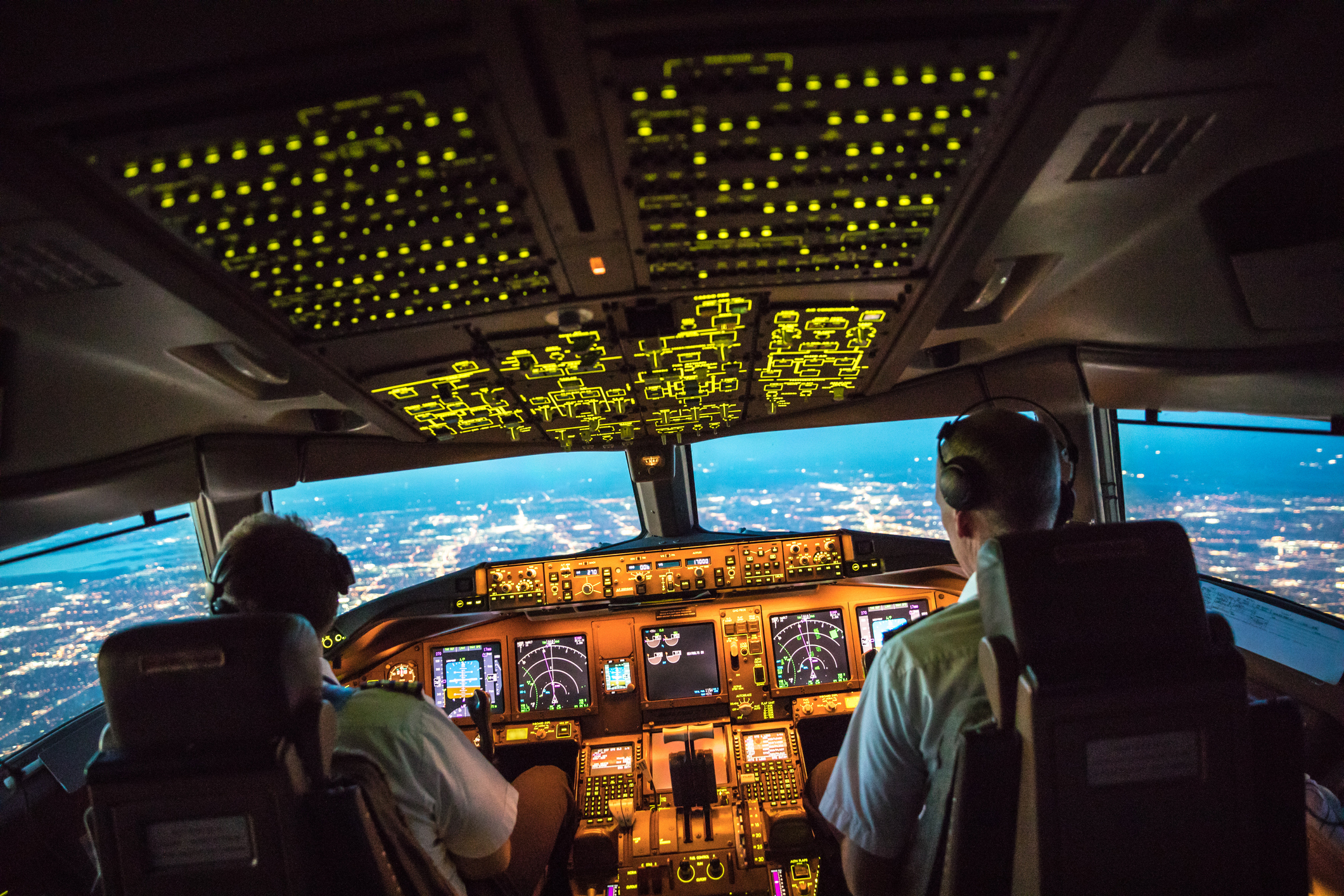
Automation in the Aircraft Cockpit
However, counter to the introduction of a four-eyes principle, there are also considerations to reduce the number of people in the aircraft cockpit. This has mainly to do with the increasing automation of scheduled flights. But what is the current status and will there soon be fully automated aircraft cockpits?
The Autopilot in the Aircraft Cockpit
Normally, a large part of the steering is already carried out by an autopilot these days. The human pilots primarily control take-off and landing and make any necessary corrections, for example in bad weather. Here, too, the constant further development and improvement of computer systems mean that there is hardly any need to intervene in the cockpit during the flight. The optimal altitude and speed are calculated using data such as weight, fuel quantity, take-off and destination, which are entered into the system before the flight.
Reduction of the Aircraft Cockpit Crew
The first effects of this automation have been noticeable for some time. In the past, there was always a flight engineer in the cockpit alongside the two pilots, but now only three people are on board to control the aircraft on long-haul flights, to allow for alternating rest phases. For particularly small aircraft with up to eleven passengers, only one pilot is even necessary.
Will There Be Fully Automated Aircraft Cockpits in the Future?
The advance of drone technology has also led to considerations as to whether aircraft still need pilots in the cockpit at all. Technologically, unmanned flights controlled from the ground are already possible. However, pilot associations warn against such a step. For example, many problems that can be quickly detected and corrected in the aircraft cockpit would lead to greater difficulties if controlled from the ground. Moreover, the willingness on the passenger side to board completely machine-controlled aircraft is quite questionable. For this reason, there are no concrete plans for implementation as yet.
So for the time being, the aircraft cockpit will remain a pilot's capsule with numerous lights, levers and screens. If you ever have the rare opportunity to visit a cockpit, take it - many exciting insights await you. Whether you travel in the cockpit or in the passenger area, we wish you a relaxing flight!

